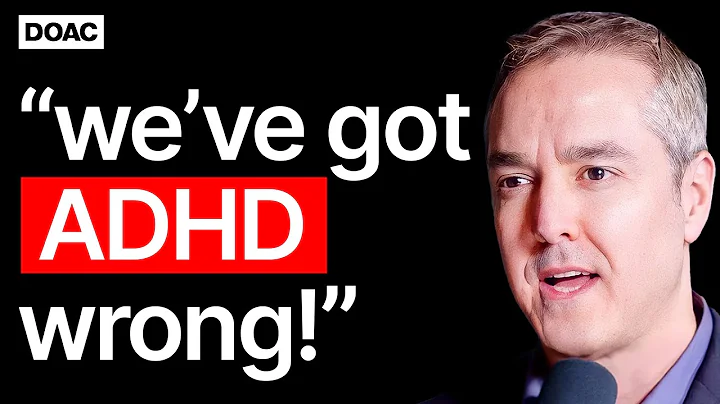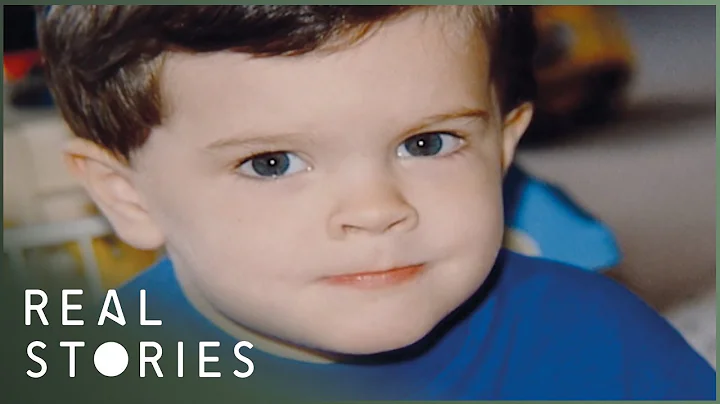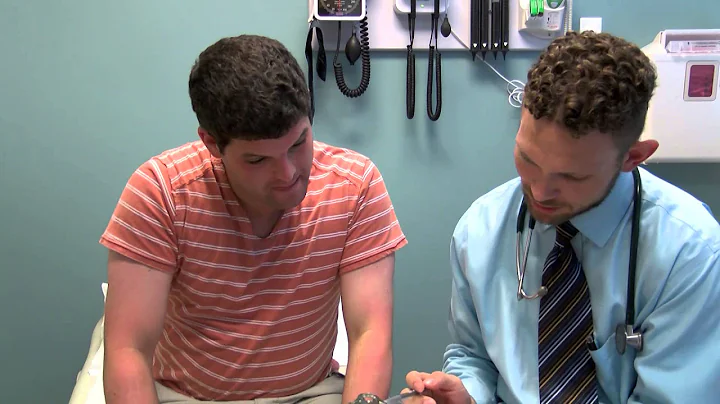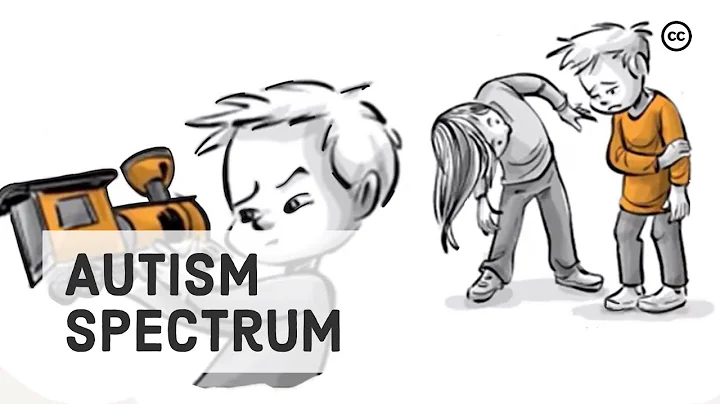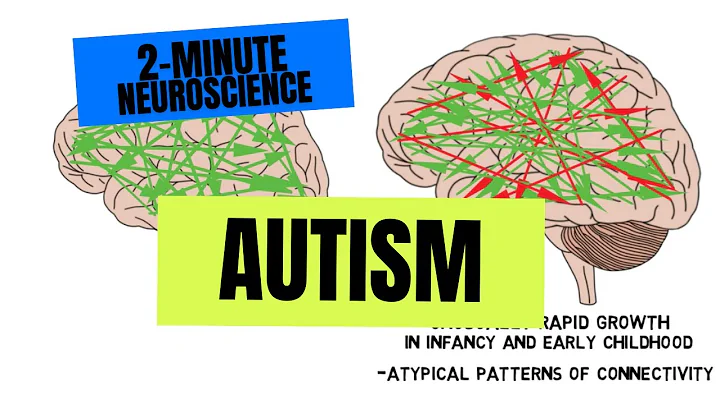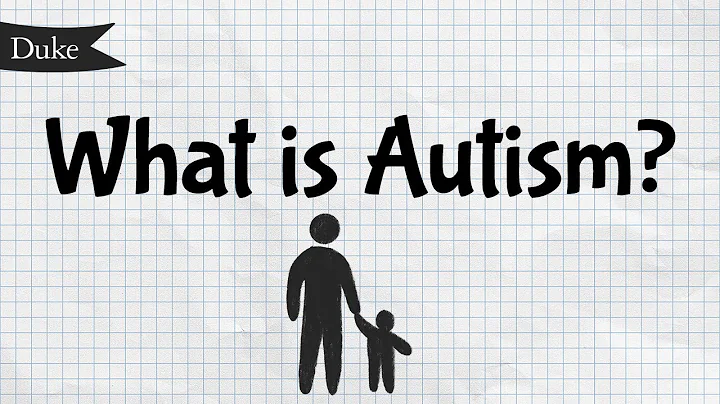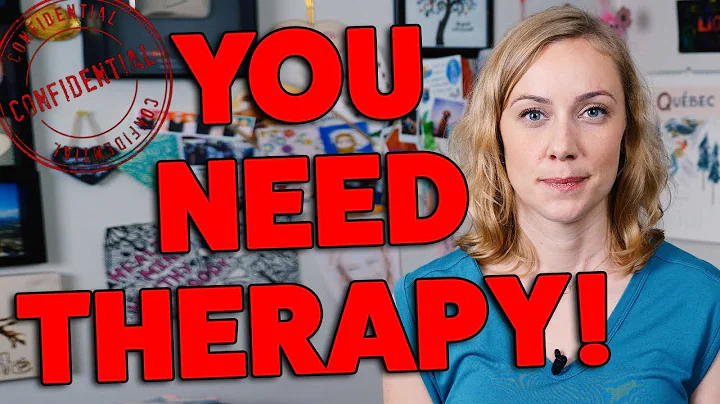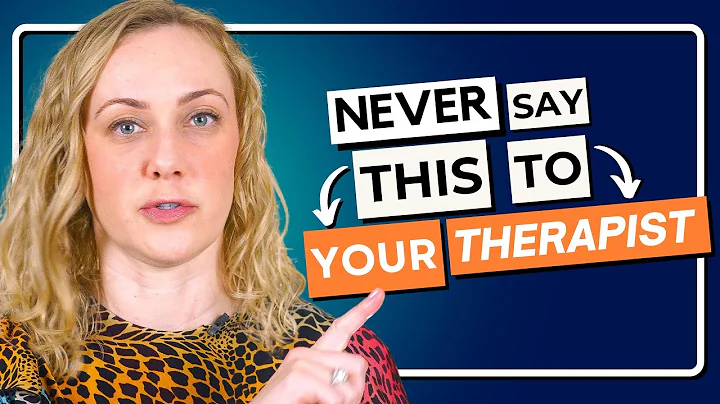
Many parents of autistic children have spent a lot of effort and have been intervening for their children for many years to improve their children's mental condition. Some people have good results, some people have average results, everything seems to be an arrangement of fate. What they don’t know is that none of these treatments have yet been supported by rigorous clinical evidence.
Compilation | Xiaoye
Twenty years ago, Andrew Whitehouse was a speech therapist. He couldn’t remember how many special little patients he had treated, but they all had a common name - children of the stars. Because these children suffer from diseases related to brain development, they do not know how to socialize and have difficulty communicating, as if they were trapped on a lonely planet. After years of scientific popularization, most people have now heard of this disease called "autism ", which is professionally called autism spectrum disorder (Autism spectrum disorder) . According to statistics from the World Health Organization , there is approximately one autistic child in every 100 children in the world. [1].
Whitehouse found that many worried parents are spending huge sums of money trying various treatments, some of which have not even been scientifically proven. Some families are scrimping on food and clothing just so that their children can use machines that are said to be able to "rewire the brain."[2]. But in fact, apart from beeping, the so-called machine has no real therapeutic effect.
Today, Whitehouse, who has extensive experience in diagnosis and treatment, is an autism research professor at the University of Western Australia (University of Western Australia) and the director of the autism research project at the Telethon Kids Institute. Over the years, Whitehouse has led the team to conduct randomized controlled clinical trials, delving into the field of autism from patients and their families, scientific research, medical practice, etc., because he has always had a heavy question in his mind: In this field, especially autism, In the field of intervention research, the clinical evidence standards accepted and even expected by scientists, doctors and the makers of medical practice systems are far lower than those in other research fields. This issue involves a wide range of issues. Not only does the family have to bear the risk of the patient's life safety, but there are also more risks such as emotional problems, economic risks and opportunity costs[2].
To this end, he led the team to start by summarizing previous academic literature, examine research on autism intervention methods that are widely popular in clinical practice, and examine the reliability of the scientific evidence. In November 2020, the team published the "Interventions for children on the autism spectrum: A synthesis of research evidence " report [3] , the conclusion shows: clinical The use of autism intervention therapies is rarely supported by solid scientific evidence. This negative conclusion immediately set off the academic community. Within weeks, a large number of clinicians, treatment providers and professional organizations took action, threatening to sue Whitehouse, complaining to his employer, and even harassing Whitehouse's family. , threatening their personal safety. Whitehouse never imagined that a scientific research report would put himself, his family and colleagues in danger.
However, it is not only the Whitehouse team’s analysis that reaches this conclusion.In 2020, the Psychological Bulletin (Psychological Bulletin ) published a meta-analysis of intervention therapies for autistic children aged 0-8 (referred to as the AIM project) [4], from Texas, USA Micheal Sandbank, assistant professor of special education at the University of Texas, led a team that tracked studies of the seven most popular and purportedly effective early intervention therapies for autism and found that, without considering study quality metrics, only three (Behavioral Intervention, Developmental Intervention and Spontaneous Developmental Behavioral Intervention (NDBI)) showed significant positive effects. But if the study criteria are strictly considered - that is, whether it is a randomized controlled trial, and whether the study results have detection bias - then all treatments are ineffective (the effect is not statistically significant). However, Sandbank himself pointed out that although the analysis results are not ideal, this does not mean that we have to give up all these intervention methods.[5].
In fact, both reports can be attributed to the same key question: Why is there so little high-quality evidence for autism intervention research?
The debate over research methods: case studies vs randomized controlled trials
The development of autism intervention science can be traced back to the 1970s and 1980s. At that time, some groundbreaking clinical studies had small sample sizes and statistical loopholes. Here I have to mention the pioneer of behavioral analysis and intervention in the field of autism: Norwegian American psychologist Ole Ivar Løvaas.

O. Ivar Løvaas in the 1980s.丨Photo source: Lovaas Institute/UCLA
Since the mid-1960s, Løvaas has tried to use Applied Behavior Analysis (Applied Behavior Analysis, referred to as ABA) to establish intervention therapy, teaching autistic children language one-on-one to break autism. Other core barriers include developing abilities such as play and self-rescue. In 1987, Løvaas published a paper entitled "Behavioral Treatment and Normal Intellectual Functioning in Young Children with Autism". with Autism) 's breakthrough research [7], the article pointed out that after early intensive ABA intervention treatment, 47% of the children tested (n=19) successfully restored normal intelligence and educational functions, which was not the same as healthy peers. difference. As for the control group of autistic children (n=40), only 2% returned to normal levels. Since then, people have begun to believe that children with autism can eventually be taught to live and learn independently. Løvaas is also known as the "Father of ABA". He actively spread ABA therapy and inspired many students and colleagues to participate in autism intervention research. Later, many new therapies emerged based on ABA intervention.
It can be said that Løvaas’ ABA research is “quasi-experimental” and innovative, but it also has certain limitations. One is the small sample size; in addition, during the research process, the children tested were not randomly grouped. His approach has the background of the times: psychological research at the same time as Løvaas mainly followed the design principle of "case study" (Single-case) . That is to say, case studies lacked a formal control group and the subjects themselves Both the experimental group and the control group.
In fact, by the 1980s, medical clinical research had widely accepted today's gold experimental standard - randomized controlled trial (Randomized controlled trial) . However, autism intervention research that combines psychology and medicine must keep up with the pace of other disciplines. Still quite laborious. Jonathan Green, professor of child and adolescent psychiatry at the University of Manchester, UK, pointed out that from the beginning, some researchers believed that RCT was neither ethical nor feasible in the face of such a complex autism.This mentality contributes to the field's default attitude toward low-standard research evidence.[8].
In the AIM project hosted by Sandbank mentioned above, less than one-third of the ABA intervention studies statistically analyzed by the researchers adopted a randomized controlled design, not to mention that most of the reports read by American clinicians It's a case study. In 2021, the National Center for the Exchange of Autism Evidence and Practice (NCAEP) reported that after a comprehensive analysis of 972 articles, it was found that 28 medical practices are based on evidence support, including many behaviors. intervention therapy, but 85% of these studies are case studies. In addition, the 2015 U.S. National Standards Report (NSP) identified 14 effective intervention therapies for children, adolescents, and young adults with autism. Likewise, 73% of the studies cited were case studies.
It is true that in the development process of modern psychology , the case study method helps to observe and study a certain subject or a small group of subjects in depth, thereby discovering the causes of certain behaviors, diseases and psychological phenomena, and observing them. Clinical developments and changes, helping researchers build theories. However, in clinical treatment research, the shortcomings of case studies are also quite obvious. First of all, has too few cases, so we must be cautious when extending the research results to more general conclusions. Second, case studies do not necessarily reveal causation.. Finally, case studies are not suitable for tracking long-term developmental changes , which is precisely the focus of intensive intervention therapies. The so-called intensive intervention therapy is a traditional treatment method for children with autism aged 0 to 9 years old. It requires 25 to 40 hours a week, from one-to-one classroom learning to daily life, and adopts intervention mechanisms at all times. , the whole process lasts two to three years. Although the labor and time costs are huge, the recovery effect is not immediate and requires long-term follow-up. However, there is still a lack of high-quality research in the academic community to prove its true effect. Sandbank points out that while case studies can help researchers examine changes in specific treatments (such as regular classroom learning in schools), "we cannot make general treatment recommendations based on case studies." Well-proven treatments may cause serious and substantial harm, so modern medical clinical trials place great emphasis on verifying whether the method is reliable[11]. Whitehouse believes that maintaining the status quo of low-quality evidence will push the development of autism intervention therapies to the brink of danger. This is also his original intention to actively promote randomized controlled studies in the field.
Conflicts of interest are everywhere
In addition to conflicts in research theories and methods, entangled conflicts of interest are also a major hidden crisis in the field of autism intervention. It is this powerful force that stubbornly suppresses the improvement of data standards.
In the United States, the autism treatment system has built a multibillion-dollar industry, thanks in large part to insurance licensing and financial companies nationwide that fund ABA intervention providers. Commercialization of autism treatments has increased access to care, but may also undermine the importance of high-quality research evidence. After all, private enterprise pursues profit, and in the game between profit and good medical practice, profit always wins. [8]
In addition to the problems caused by commercialization, researchers involved in the evaluation of research evidence may wear multiple hats, and the positions of relevant scientific research institutions behind them cannot be ignored. Conflict of interest (competing interest) may impede the impartiality of the evaluation. For example, most of the editorial board members of the Journal of Applied Behavior Analysis, which publishes ABA research, are board-certified analysts who have received ABA qualification training, so they are naturally inclined to support With ABA intervention, the evaluation of papers may be biased. Many parents of autistic children have spent a lot of effort and have been intervening for their children for many years to improve their children's mental condition. Some people have good results, some people have average results, everything seems to be an arrangement of fate. What they don’t know is that none of these treatments have yet been supported by rigorous clinical evidence. Compilation | Xiaoye Twenty years ago, Andrew Whitehouse was a speech therapist. He couldn’t remember how many special little patients he had treated, but they all had a common name - children of the stars. Because these children suffer from diseases related to brain development, they do not know how to socialize and have difficulty communicating, as if they were trapped on a lonely planet. After years of scientific popularization, most people have now heard of this disease called "autism ", which is professionally called autism spectrum disorder (Autism spectrum disorder) . According to statistics from the World Health Organization , there is approximately one autistic child in every 100 children in the world. [1]. 
Whitehouse found that many worried parents are spending huge sums of money trying various treatments, some of which have not even been scientifically proven. Some families are scrimping on food and clothing just so that their children can use machines that are said to be able to "rewire the brain."[2]. But in fact, apart from beeping, the so-called machine has no real therapeutic effect.
Today, Whitehouse, who has extensive experience in diagnosis and treatment, is an autism research professor at the University of Western Australia (University of Western Australia) and the director of the autism research project at the Telethon Kids Institute. Over the years, Whitehouse has led the team to conduct randomized controlled clinical trials, delving into the field of autism from patients and their families, scientific research, medical practice, etc., because he has always had a heavy question in his mind: In this field, especially autism, In the field of intervention research, the clinical evidence standards accepted and even expected by scientists, doctors and the makers of medical practice systems are far lower than those in other research fields. This issue involves a wide range of issues. Not only does the family have to bear the risk of the patient's life safety, but there are also more risks such as emotional problems, economic risks and opportunity costs[2].
To this end, he led the team to start by summarizing previous academic literature, examine research on autism intervention methods that are widely popular in clinical practice, and examine the reliability of the scientific evidence. In November 2020, the team published the "Interventions for children on the autism spectrum: A synthesis of research evidence " report [3] , the conclusion shows: clinical The use of autism intervention therapies is rarely supported by solid scientific evidence. This negative conclusion immediately set off the academic community. Within weeks, a large number of clinicians, treatment providers and professional organizations took action, threatening to sue Whitehouse, complaining to his employer, and even harassing Whitehouse's family. , threatening their personal safety. Whitehouse never imagined that a scientific research report would put himself, his family and colleagues in danger.
However, it is not only the Whitehouse team’s analysis that reaches this conclusion.In 2020, the Psychological Bulletin (Psychological Bulletin ) published a meta-analysis of intervention therapies for autistic children aged 0-8 (referred to as the AIM project) [4], from Texas, USA Micheal Sandbank, assistant professor of special education at the University of Texas, led a team that tracked studies of the seven most popular and purportedly effective early intervention therapies for autism and found that, without considering study quality metrics, only three (Behavioral Intervention, Developmental Intervention and Spontaneous Developmental Behavioral Intervention (NDBI)) showed significant positive effects. But if the study criteria are strictly considered - that is, whether it is a randomized controlled trial, and whether the study results have detection bias - then all treatments are ineffective (the effect is not statistically significant). However, Sandbank himself pointed out that although the analysis results are not ideal, this does not mean that we have to give up all these intervention methods.[5].
In fact, both reports can be attributed to the same key question: Why is there so little high-quality evidence for autism intervention research?
The debate over research methods: case studies vs randomized controlled trials
The development of autism intervention science can be traced back to the 1970s and 1980s. At that time, some groundbreaking clinical studies had small sample sizes and statistical loopholes. Here I have to mention the pioneer of behavioral analysis and intervention in the field of autism: Norwegian American psychologist Ole Ivar Løvaas.

O. Ivar Løvaas in the 1980s.丨Photo source: Lovaas Institute/UCLA
Since the mid-1960s, Løvaas has tried to use Applied Behavior Analysis (Applied Behavior Analysis, referred to as ABA) to establish intervention therapy, teaching autistic children language one-on-one to break autism. Other core barriers include developing abilities such as play and self-rescue. In 1987, Løvaas published a paper entitled "Behavioral Treatment and Normal Intellectual Functioning in Young Children with Autism". with Autism) 's breakthrough research [7], the article pointed out that after early intensive ABA intervention treatment, 47% of the children tested (n=19) successfully restored normal intelligence and educational functions, which was not the same as healthy peers. difference. As for the control group of autistic children (n=40), only 2% returned to normal levels. Since then, people have begun to believe that children with autism can eventually be taught to live and learn independently. Løvaas is also known as the "Father of ABA". He actively spread ABA therapy and inspired many students and colleagues to participate in autism intervention research. Later, many new therapies emerged based on ABA intervention.
It can be said that Løvaas’ ABA research is “quasi-experimental” and innovative, but it also has certain limitations. One is the small sample size; in addition, during the research process, the children tested were not randomly grouped. His approach has the background of the times: psychological research at the same time as Løvaas mainly followed the design principle of "case study" (Single-case) . That is to say, case studies lacked a formal control group and the subjects themselves Both the experimental group and the control group.
In fact, by the 1980s, medical clinical research had widely accepted today's gold experimental standard - randomized controlled trial (Randomized controlled trial) . However, autism intervention research that combines psychology and medicine must keep up with the pace of other disciplines. Still quite laborious. Jonathan Green, professor of child and adolescent psychiatry at the University of Manchester, UK, pointed out that from the beginning, some researchers believed that RCT was neither ethical nor feasible in the face of such a complex autism.This mentality contributes to the field's default attitude toward low-standard research evidence.[8].
In the AIM project hosted by Sandbank mentioned above, less than one-third of the ABA intervention studies statistically analyzed by the researchers adopted a randomized controlled design, not to mention that most of the reports read by American clinicians It's a case study. In 2021, the National Center for the Exchange of Autism Evidence and Practice (NCAEP) reported that after a comprehensive analysis of 972 articles, it was found that 28 medical practices are based on evidence support, including many behaviors. intervention therapy, but 85% of these studies are case studies. In addition, the 2015 U.S. National Standards Report (NSP) identified 14 effective intervention therapies for children, adolescents, and young adults with autism. Likewise, 73% of the studies cited were case studies.
It is true that in the development process of modern psychology , the case study method helps to observe and study a certain subject or a small group of subjects in depth, thereby discovering the causes of certain behaviors, diseases and psychological phenomena, and observing them. Clinical developments and changes, helping researchers build theories. However, in clinical treatment research, the shortcomings of case studies are also quite obvious. First of all, has too few cases, so we must be cautious when extending the research results to more general conclusions. Second, case studies do not necessarily reveal causation.. Finally, case studies are not suitable for tracking long-term developmental changes , which is precisely the focus of intensive intervention therapies. The so-called intensive intervention therapy is a traditional treatment method for children with autism aged 0 to 9 years old. It requires 25 to 40 hours a week, from one-to-one classroom learning to daily life, and adopts intervention mechanisms at all times. , the whole process lasts two to three years. Although the labor and time costs are huge, the recovery effect is not immediate and requires long-term follow-up. However, there is still a lack of high-quality research in the academic community to prove its true effect. Sandbank points out that while case studies can help researchers examine changes in specific treatments (such as regular classroom learning in schools), "we cannot make general treatment recommendations based on case studies." Well-proven treatments may cause serious and substantial harm, so modern medical clinical trials place great emphasis on verifying whether the method is reliable[11]. Whitehouse believes that maintaining the status quo of low-quality evidence will push the development of autism intervention therapies to the brink of danger. This is also his original intention to actively promote randomized controlled studies in the field.
Conflicts of interest are everywhere
In addition to conflicts in research theories and methods, entangled conflicts of interest are also a major hidden crisis in the field of autism intervention. It is this powerful force that stubbornly suppresses the improvement of data standards.
In the United States, the autism treatment system has built a multibillion-dollar industry, thanks in large part to insurance licensing and financial companies nationwide that fund ABA intervention providers. Commercialization of autism treatments has increased access to care, but may also undermine the importance of high-quality research evidence. After all, private enterprise pursues profit, and in the game between profit and good medical practice, profit always wins. [8]
In addition to the problems caused by commercialization, researchers involved in the evaluation of research evidence may wear multiple hats, and the positions of relevant scientific research institutions behind them cannot be ignored. Conflict of interest (competing interest) may impede the impartiality of the evaluation. For example, most of the editorial board members of the Journal of Applied Behavior Analysis, which publishes ABA research, are board-certified analysts who have received ABA qualification training, so they are naturally inclined to support With ABA intervention, the evaluation of papers may be biased.
In addition, many ABA analysts have also participated in the writing of national standard reports, and it is logical to include ABA therapy in the list of standard "established intervention therapies". At the same time, the May Institute, a non-profit organization that provides ABA intervention therapy services across the United States, is also one of the fund sponsors of the national standards report. Although the contributions of the analysts and institutes were listed in the report, there was no mention of hidden conflicts of interest. After all, it was not routine practice in those days to strictly ask about conflicts of interest in the assessment agenda. While this does not mean that ABA analysts must be excluded from their practice, stating conflicts of interest will allow others to more fairly review the research evidence.
In addition, conflicts of interest also involve the dual role of researchers themselves. The person who reviews autism intervention studies may also be the creator of a certain therapy. However, this identity overlap is rarely mentioned in published studies. Connie Kasari, professor of human development and psychology at the University of California, commented: “Researchers often have little incentive to step out of their own silos and are unwilling to independently verify or collaborate with others to jointly verify interventions. In the final analysis, it is still a question of money. [8]
The future development trend of autism therapy
The development of the autism field is less than a century old, but it is now necessary to transcend the concepts and methods left over from history. Many scientists are working to promote the development of this field in more dimensions, and everyone is still optimistic about the future.
First of all, regarding the issue of experimental methodology, autism research has tended to turn to the path of randomized control. According to statistics, the number of randomized controlled studies has climbed from 2 in 2000 to 48 in 2018. Most of them appeared after 2010, and only 12.5% of the studies have a low risk of bias. [12]
Second, autism intervention research needs to go beyond validating a single intervention within a control group and instead compare multiple intervention therapies. The ultimate goal is to allow doctors to list the advantages and disadvantages of different treatments to patient families, so that they can make wise choices that benefit patients. For example, a 2021 study published in the Journal of the American Academy of Child & Adolescent Psychiatry compared the effectiveness of ABA intervention therapy with the Early Intervention Denver Model (ESDM). [13] , which is a comprehensive intervention system mainly for autistic children aged 1 to 3 years old, and can be extended to children aged 4 to 5 years old. It uses games as an intervention framework, focuses on the establishment of emotional interaction and social motivation, and emphasizes teaching in natural situations. and family intervention model [14]. The results showed that the two treatments were equally effective. In fact, if more studies like this can appear, it can help professionals understand in time which intervention therapies can achieve the best results with the least time and economic cost. But there are still too few such studies at present.
In addition to comparing the efficacy of multiple therapies, the application sequence of different intervention therapies is also worth exploring. Connie Kasari, professor of human development and psychology at the University of California, Los Angeles (UCLA), led a team to develop the game-based natural intervention therapy JASPER. She compared the effects of applying JASPER before and after ABA intervention on some children. For some, it is better to receive structured ABA intervention first, while for others, the opposite is true. Such sequential multiple allocation randomized trials will help develop personalized treatment strategies for individuals.
For researchers, Sandbank recommends breaking the traditional model of verifying intervention therapies through individual cases. The above list has also shown that experimental plans can be designed from multiple angles to achieve the priority of independently replicating intervention effects. While the results of such a study may not be as good as the original study, "we have to be unafraid of any findings.""[8] At the same time, researchers should always remember their obligation to carry out high-quality scientific research instead of passing the responsibility to other parties.
Finally, if we want to effectively promote autism intervention research, scientific supervision also needs to be self-regulated. Top-down changes. Many autism journals need to tighten their standards for publishing papers, and they also need more funding to incentivize researchers to carry out more expensive and complex experiments, such as the one designed by Kasari mentioned above. Sequential multiple allocation randomized trials.
The two reports mentioned at the beginning of this article (from the Whitehouse and Sandbank teams) have brought potential problems in the field of autism science to the public eye, although research activities are still struggling to catch up. The pace of medical practice, and "the entire field has only just begun to obtain high-quality data" [8], but only by doing something can we save more "children of the stars"
References
[1] https: //www.who.int/en/news-room/fact-sheets/detail/autism-spectrum-disorders
[2] https://www.spectrumnews.org/opinion/beyond-the-bench-a-conversation- with-andrew-whitehouse/
[3] https://www.autismcrc.com.au/interventions-evidence
[4] https://doi.apa.org/doiLanding?doi=10.1037%2Fbul0000215
[5] https: //www.spectrumnews.org/news/studies-find-thin-evidence-for-early-autism-therapies/
[6] http://thelovaascenter.com/about-us/dr-ivar-lovaas/
[ 7] https://doi.apa.org/doiLanding?doi=10.1037%2F0022-006X.55.1.3
[8] https://www.the-scientist.com/news-opinion/why-autism-therapies- have-an-evidence-problem-69916
[9] https://link.springer.com/article/10.1007/s10803-020-04844-2
[10] https://nationalautismcenter.org/national-standards-project/ phase-2/significant-findings/
[11] https://blog.sciencenet.cn/blog-279293-1254793.html
[12] https://acamh.onlinelibrary.wiley.com/doi/10.1111/jcpp. 12828
[13] https://linkinghub.elsevier.com/retrieve/pii/S0890856720313502
[14] https://www.ncbi.nlm.nih.gov/pmc/articles/PMC7390010/#:~:text=%E6 %97%A9%E6%9C%9F%E4%BB%8B%E5%85%A5%E4%B8%B9%E4%BD%9B%E6%A8%A1%E5%BC%8F%EF%BC %88Early,%E5%84%BF%E7%AB%A5%E7%9A%84%E7%BB%BC%E5%90%88%E5%B9%B2%E9%A2%84%E4%BD% 93%E7%B3%BB%E3%80%82
Special Tips
1. Enter the "Boutique Column" menu at the bottom of the WeChat official account of "Back to Basics" to view a series of popular science articles on different topics.
2. "Back to Basics" provides the function of retrieving articles by month. Follow the official account and reply with the four-digit year + month, such as "1903", to get the article index for March 2019, and so on.
Copyright statement: Individuals are welcome to repost. Any form of media or institution is not allowed to reprint or excerpt without authorization. For reprint authorization, please contact the backend through the "Hui Pu" WeChat official account.
"[8] At the same time, researchers should always remember their obligation to carry out high-quality scientific research instead of passing the responsibility to other parties.Finally, if we want to effectively promote autism intervention research, scientific supervision also needs to be self-regulated. Top-down changes. Many autism journals need to tighten their standards for publishing papers, and they also need more funding to incentivize researchers to carry out more expensive and complex experiments, such as the one designed by Kasari mentioned above. Sequential multiple allocation randomized trials.
The two reports mentioned at the beginning of this article (from the Whitehouse and Sandbank teams) have brought potential problems in the field of autism science to the public eye, although research activities are still struggling to catch up. The pace of medical practice, and "the entire field has only just begun to obtain high-quality data" [8], but only by doing something can we save more "children of the stars"
References
[1] https: //www.who.int/en/news-room/fact-sheets/detail/autism-spectrum-disorders
[2] https://www.spectrumnews.org/opinion/beyond-the-bench-a-conversation- with-andrew-whitehouse/
[3] https://www.autismcrc.com.au/interventions-evidence
[4] https://doi.apa.org/doiLanding?doi=10.1037%2Fbul0000215
[5] https: //www.spectrumnews.org/news/studies-find-thin-evidence-for-early-autism-therapies/
[6] http://thelovaascenter.com/about-us/dr-ivar-lovaas/
[ 7] https://doi.apa.org/doiLanding?doi=10.1037%2F0022-006X.55.1.3
[8] https://www.the-scientist.com/news-opinion/why-autism-therapies- have-an-evidence-problem-69916
[9] https://link.springer.com/article/10.1007/s10803-020-04844-2
[10] https://nationalautismcenter.org/national-standards-project/ phase-2/significant-findings/
[11] https://blog.sciencenet.cn/blog-279293-1254793.html
[12] https://acamh.onlinelibrary.wiley.com/doi/10.1111/jcpp. 12828
[13] https://linkinghub.elsevier.com/retrieve/pii/S0890856720313502
[14] https://www.ncbi.nlm.nih.gov/pmc/articles/PMC7390010/#:~:text=%E6 %97%A9%E6%9C%9F%E4%BB%8B%E5%85%A5%E4%B8%B9%E4%BD%9B%E6%A8%A1%E5%BC%8F%EF%BC %88Early,%E5%84%BF%E7%AB%A5%E7%9A%84%E7%BB%BC%E5%90%88%E5%B9%B2%E9%A2%84%E4%BD% 93%E7%B3%BB%E3%80%82
Special Tips
1. Enter the "Boutique Column" menu at the bottom of the WeChat official account of "Back to Basics" to view a series of popular science articles on different topics.
2. "Back to Basics" provides the function of retrieving articles by month. Follow the official account and reply with the four-digit year + month, such as "1903", to get the article index for March 2019, and so on.
Copyright statement: Individuals are welcome to repost. Any form of media or institution is not allowed to reprint or excerpt without authorization. For reprint authorization, please contact the backend through the "Hui Pu" WeChat official account.
